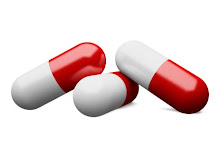In the emergency department, physicians initially treat the signs and symptoms of the overdosed patient and rely on the laboratory drug testing results to confirm the diagnosis and to possibly monitor treatment. The National Academy of Clinical Biochemistry (NACB) practice guidelines for the use of laboratory tests to support poisoned patients recommends that the clinical laboratory provide two tiers of drug testing: a first tier of qualitative and quantitative tests available on a stat basis to support evaluation of acute toxicity for specific toxins for which an antidote or specific therapy is available, and a second tier (turnaround time of 24 hours or less) of more comprehensive testing of patients with continuing medical problems from exposure to other drugs and chemicals.
The 1888 Mandatory Guidelines for Federal Workplace drug Testing Programs and subsequent revisions mandate scientific and technical procedures for the drug testing process, including: collection, Transportation of specimens, testing procedures incorporating quality control, method evaluation, results reporting, and standards for laboratory accreditation by the National Laboratory Certification Program (NLVP). Although private-sector industries are not required to follow the guidelines develop for the federal program, many choose to do so.
Currently, urine is the specimen of choice for both clinical and workplace drug testing with certain exceptions (i.e., ethanol testing under DOT which breath, blood, or saliva matrices are acceptable). Urine offers the advantages of non-invasive collection and a relatively easy, cost-effective proven technology. Guidelines mandate a controlled collection and use of standardized Custody and Control Forms as the specimen requisition, chain of custody, and official report form.
A laboratory may only test for certain drugs (the “NIDA 5”) at specified cutoff levels for the federal workplace drug testing. Testing for other drugs (e.g., barbiturates, benzodiazepines, propoxyphene, methaqualone, etc.) and at other cutoff concentrations may occour fro non-regulated. State regulated, and clinical samples. Federal regulated tesging mandates initial screening by an immunoassay method and subsequednt conformation of all screening- positibve samples by gas chromatography mass spectrometry (GCMS). Clinical and non-regulated testing may utilize any combination of methods available.
Test Interpetation
Testing for amphetamines in regulated samples includes testing for only amphetamine and methamphetamine. Methamphetamine is metabolized to amphetamine, and a positive methamphetamine specimen must contain amphetamine at a concentration greater than 200 ng/mL, in addition methamphetamine at a concentration of greater than 500 ng/mL cutoff. Several prescription medications (Adderal®, Dexdrine®, Didrex®, Eldepryl®, etc.) Contain either amphetamine or methamphetamine or compounds that are metabolized to theses substances. For clinical and non-regulated testing, the detection of other amphetamine family substances, such as MDMA (Ecstasy) may be requests. The ability of the ability of the laboratory to detect such compounds is dependent on the specificity of the antibody and the type of immunoassay used for screening.
Screening immunoassays for cannabinoids detect multiple metabolites for marijuana with a cutoff
Concentration of 50 ng/mL used for regulated drug testing. GCMS conformation identifies and quantities the major metabolite, 11-non-tetrahydrocannabinol-9carboxylic acid (delta-9 THca). Using a cutoff of 15 ng/mL. chronic marijuana users may produce positive results for longer periods of time than acute users (up to several weeks) because of accumulation of cannabinoid metabolites in fatty tissues followed by slow release. Studies have shown that it is highly unlikely that a nonsmoking individual could inhale sufficient smoke by passive inhalation to result in a positive result when using a screening cutoff of 50 ng/mL. Immunoassays with cutoffs of 20ng/mL and 100 ng/mL are available for non-regulated and clinical testing, although NACB guidelines recommended that there is no clinical reason for routine cannabinoids testing in the over closed patient.
Cocaine is rapidly metabolized, and the major metabolite, benzoylecgonine, is the primary compound measured by cocaine (metabolite) immunoassays. There are no cocaine-containing prescription medications, but cocaine solutions are sometimes used as a topical anesthetic for various ear, nose, throat, bronchoscopic, and ophthalmologic procedures.





